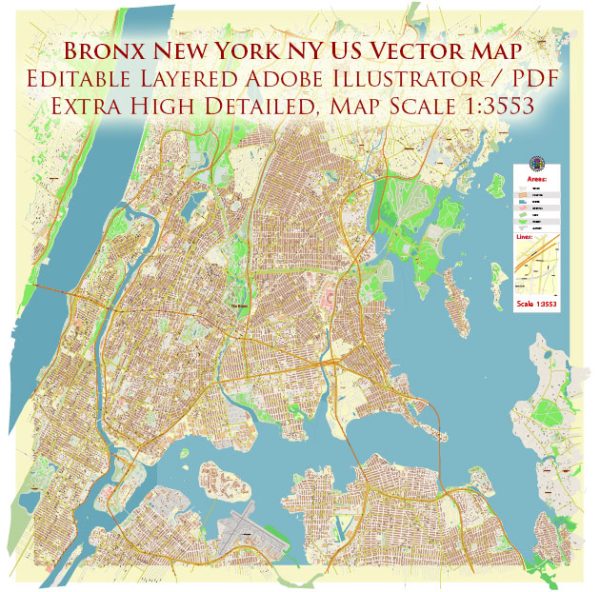The Bronx is one of the five boroughs of New York City, located in the northern part of the city. It has a rich and diverse history that has played a significant role in the development of New York City as a whole. Here is a brief description of the history of the Bronx:
- Native American Inhabitation: Before European colonization, the Bronx was inhabited by the Lenape Native American people. They called the area “Lenapehoking” and lived off the abundant natural resources, including forests, rivers, and fertile land.
- European Colonization: The Bronx was first settled by Europeans in 1639 when Jonas Bronck, a Swedish sea captain, acquired land in the area. The area was later named after him, and “Bronck’s Land” eventually evolved into “The Bronx.”
- Agricultural and Rural Period: Throughout the 17th and 18th centuries, the Bronx remained primarily rural and agricultural, with farms and estates dotting the landscape.
- Development and Urbanization: The 19th century saw the Bronx undergo significant development and urbanization, with the construction of the Harlem River Bridge (later known as the Third Avenue Bridge) in 1864 and the arrival of the New York and Harlem Railroad in the area. This led to population growth and increased accessibility to Manhattan.
- Late 19th and Early 20th Century Growth: In the late 19th and early 20th centuries, the Bronx experienced a housing boom, with the construction of many tenement buildings and the development of suburban neighborhoods. The opening of the first subway line to the Bronx in 1904 further facilitated its growth.
- Immigrant Communities: The Bronx became home to a diverse array of immigrant communities, including Irish, Italian, Jewish, and later Puerto Rican and African American populations. These groups contributed to the borough’s cultural richness and diversity.
- Post-World War II Development: After World War II, the Bronx experienced a significant period of development and housing construction. Large housing projects, like Co-op City, were built to accommodate the borough’s growing population.
- Challenges and Decline: Unfortunately, the Bronx also faced a series of challenges in the mid-20th century, including economic decline, high crime rates, and housing issues. The South Bronx, in particular, became associated with urban blight and decay.
- Revitalization and Renewal: In the late 20th century and into the 21st century, the Bronx has seen efforts at revitalization and renewal. Crime rates have decreased, and many neighborhoods have undergone redevelopment, including the revitalization of the South Bronx and the construction of new housing and amenities.
- Cultural and Educational Institutions: The Bronx is home to several renowned cultural and educational institutions, including the Bronx Zoo, the New York Botanical Garden, and several universities and colleges, such as Fordham University.
Today, the Bronx is a diverse and dynamic borough of New York City with a rich cultural heritage, historic sites, and a strong sense of community. It has evolved from its early days as a rural area to become a vital part of the city’s cultural and economic landscape.


 Author: Kirill Shrayber, Ph.D.
Author: Kirill Shrayber, Ph.D.